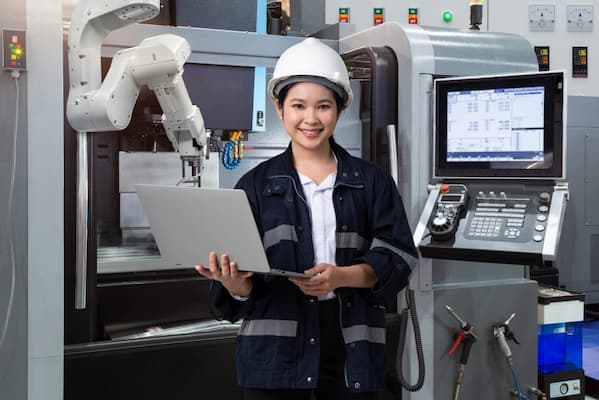News and Events
The robotics industry is constantly changing and evolving. New robotics technologies and developments in automation are quickly creating exciting career opportunities at every education level – from micro-credentials to PhDs. Here is where you can learn more about robotics careers in manufacturing and how these new technologies are benefiting workers


NEWS
How Robots Revolutionized the Manufacturing Industry
February 10, 2021Robotics and artificial intelligence would never have developed as far as they have without the manufacturing industry’s early and enthusiastic adoption of robots. In fact, you could make the argument that the unprecedented technological developments of the 20th century took place because manufacturers used robots. Let's discuss how robots revolutionized the manufacturing industry and, as a result, revolutionized the world.
The Origin of the Word “Robot”
The word robot, as we all know, comes from the Czech Karel Čapek in 1921. In his satire, R.U.R. (Rossum’s Universal Robots), the term robot was first used, based on the word robota, from the Czech. Though the word might have been used first in that play, the concept of autonomous, animate objects was not new. The ancient Egyptians would frequently pray to statues of their gods, which were said to be animate and move of their own will. While the actual robots we use today aren’t made of clay or stone, they have been alive in the human consciousness for thousands of years. One could even make the case that autonomous, animate objects have been a part of the human conciousness for nearly as long as civilization itself, so the origin of robotics as a concept is incredibly old.
The Origin of Modern Robotics
The first creation we would identify as the kind of robot we’re used to didn’t come until 1954, with the creation of Unimate, the first digitally operated and programmable robot. Invented by George Devol, he sold the first Unimate to General Motors in 1960. It came online in 1961, moving hot pieces of metal from a die casting machine into cooling liquid.
The Unimate was autonomous with limited supervision and capable of near-constant operation, all of the qualities we currently associate with robots. It was this implementation, the first use of robots in manufacturing, that would pave the way for an entire industry: robotics. When examining how advanced robotics revolutionized the manufacturing industry, this is the first clear, distinct use of robotics in a mainstream manufacturer’s workflow, and a huge stepping stone for the use of robotics.
How Robots Are Currently Revolutionizing Manufacturing
The years between 1961 and 2021 were eventful if you didn’t know. There was a lot happening in industry and in the world economy. The cycle of busts and booms made for an occasionally rocky road to automation, creating times in which manufacturers simply couldn’t take the risks necessary for the implementation of revolutionary robotics systems. In some ways, it’s a path we are still walking.
The robots that first took hold in industrial settings were largely found in Japan, where the computer-controlled automatons in car manufacturing and other high-volume manufacturing applications really took off. Not only did automation not “take everybody’s job” as was so widely feared by the ideological descendants of Ned Ludd, but it also multiplied the possibilities of these robotics jobs. Careers in dangerous manufacturing environments could now be completed by robot workers, freeing human beings to take on the tasks of maintaining, building, and programming robots in careers as robotic technicians and specialists. As robotics continues to revolutionize the American manufacturing sector, these careers will only continue to grow in relevance, importance, and salary.
Learn all about those careers and how you can start the path to one at roboticscareer.org.


